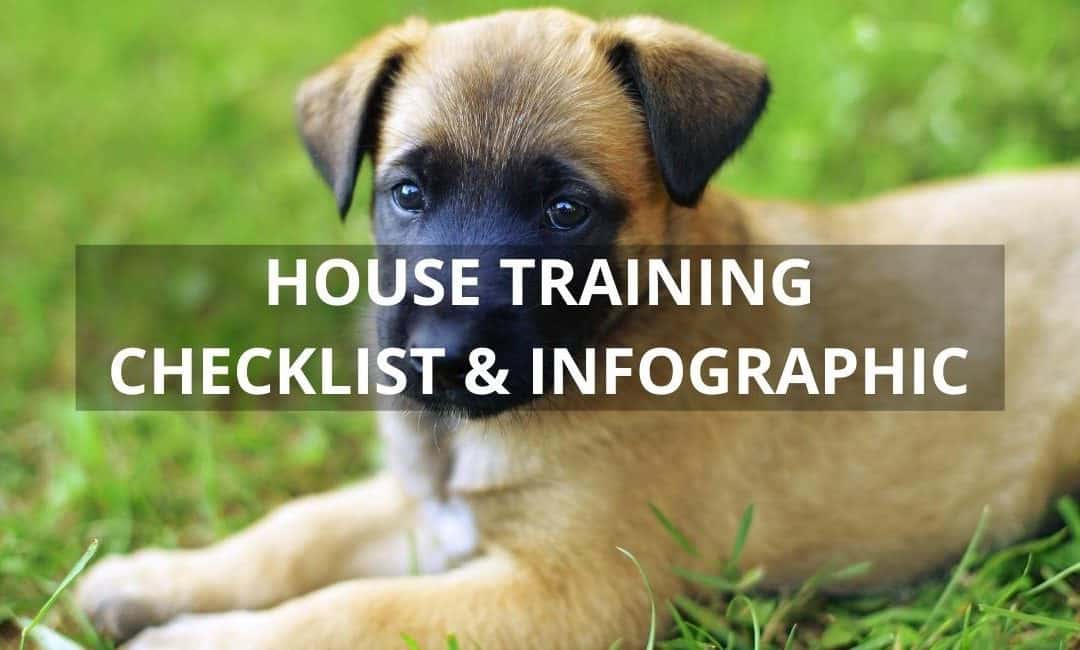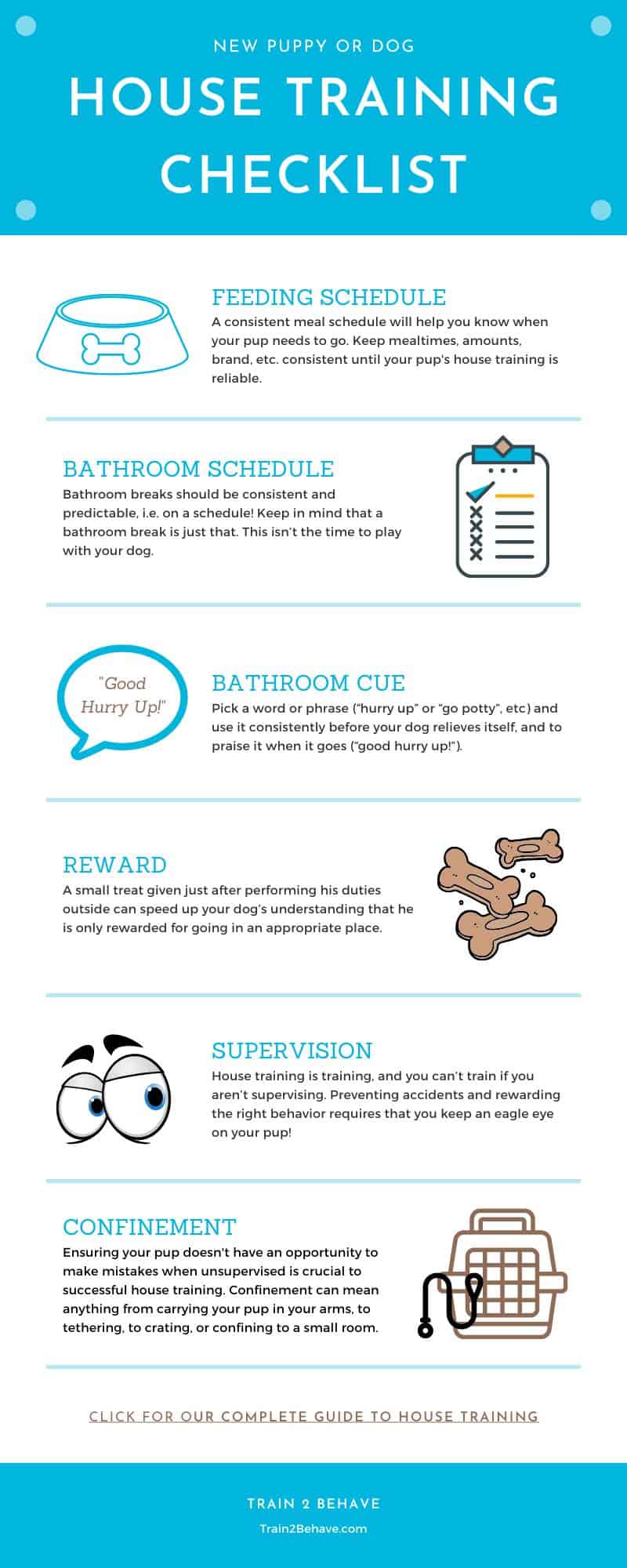Housetraining a new puppy or adopted dog is mostly a matter of sticking to a schedule and plan.
This is true, even if you’re going back and housetraining a dog that never was 100% reliable, or tuning up a pup whose housetraining has gotten a wee bit sloppy and unpredictable.
This Housetraining Checklist and Infographic condenses the main points from Housetraining Your Pup: A Step By Step Guide
It will help you keep the most important concepts in successful puppy housetraining front and center!
Houstraining Checklist for Dogs & Puppies
Feeding Schedule
A consistent meal schedule will help you know when your pup needs to go. Keep mealtimes, amounts fed, brand and formula of food, etc. consistent until your pup’s house training is reliable. Avoid giving rich treats or any treats in more than small amounts.
Bathroom Schedule
Bathroom breaks should be consistent and predictable, i.e. on a schedule! Keep in mind that a bathroom break is just that. This isn’t the time to play with your dog. Take your pup out, stand quietly and give him the freedom to sniff around without distraction.
Bathroom Cue
Pick a word or phrase (“hurry up†or “go pottyâ€, etc) and use it consistently before your dog relieves itself, and to praise it when it goes (“good hurry up!â€). This is handy in so many ways!
Reward
Food rewards for successful bathroom trips are not necessary, but may speed up your dog’s understanding that he is only rewarded for going in an appropriate place. Give a small treat immediately after your pup performs her duties outside (or wherever your chosen bathroom spot may be).
Supervision
House training is training, and you can’t train if you aren’t supervising. Preventing accidents and rewarding the right behavior requires that you keep an eagle eye on your pup!
Proper supervision allows you to not only stop mistakes from happening, it lets you catch your dog’s signals that he needs to go out, and gives you the ability to praise him for telling you he needs to go. Win-win!
Confinement
Of course, there will be times when you simply can’t closely supervise your pup. During those times, your pup should be confined in such a way that he won’t have a chance to make a mistake (and learn that the carpet behind the couch is a handy alternative bathroom).
Preventing accidents through some method of confinement is crucial to successful house training.
How you confine your pup will depend on what works best for you, your pup, and your living situation.
There are several ways to confine your dog when supervision isn’t practical. You can mix and match depending on the situation, of course.
- Use a leash to tether your pup to something stationary in the room with you. (This is not an option if you plan to leave your pup alone).
- Leash your pup and either hold the leash, or attach it to your belt, tie it around your waist, etc. This is an awesome way to a) learn your pup’s signals for wanting to go out, and b) to bond with your new puppy or dog!
- Place your pup in a pen or other small area (with housetraining pads if needed).
- Put your pup in her crate.
- Carry your puppy in your arms.
Need more detailed information on housetraining your new dog or puppy? Or maybe you have an older puppy or dog that has never really gotten reliably housetrained?
For a thorough, easy-to-follow plan for how to housetrain any puppy, older dog, or rescue dog, be sure to read my article, Housetraining Your Pup: A Step By Step Guide !
I hope you enjoyed and found value in this article. If you did, please share with your friends!
Best,
julie
(bio)

